Taberror Inconsistent Use Of Tabs And Spaces In Indentation
### Indentation and Its Importance in Programming
Indentation refers to the use of whitespace at the beginning of a code line to indicate its hierarchical level in the program’s structure. In most programming languages, including Python, indentation is not just a matter of style but a requirement for the code to execute correctly. It helps define the scope of control structures, such as loops and conditional statements.
Consistent indentation is essential for readability, maintainability, and collaboration. It allows programmers to quickly identify code blocks, understand the program flow, and detect syntax errors.
### Indentation and Clarity of Code
Clear and well-structured code is important for many reasons. It makes code easier to understand, modify, and debug. Proper indentation enhances code readability, aids in identifying logical blocks, and reduces the potential for errors. When code is poorly indented, it becomes harder to follow and can lead to confusion and mistakes.
### Challenges with Tab and Space Inconsistencies
One of the common challenges programmers face is the inconsistent use of tabs and spaces in indentation. Some developers prefer using tabs, while others prefer spaces. Mixing both can lead to inconsistencies and errors.
For example, in Python, mixing tabs and spaces in the same file can result in an “IndentationError: unindent does not match any outer indentation level” error. This error occurs because Python expects consistent indentation throughout the code.
Additionally, code editors, such as VSCode, PyCharm, and Colab, may handle tabs and spaces differently by default, which can further complicate the issue.
### Causes of Tab and Space Errors
There are several reasons why tab and space errors occur in indentation:
1. Copying and Pasting: When code snippets are copied from different sources, they may contain various indentation styles, including tabs and spaces. Pasting such code without adjusting the indentation can lead to inconsistencies.
2. Inconsistent Editor Settings: Different code editors have different default settings for indentation. If multiple programmers work on the same project using different editors with varying settings, it can result in inconsistent indentation.
3. Lack of Coding Standards: In the absence of coding standards or guidelines, developers may use different indentation styles based on their personal preferences, leading to inconsistencies.
4. Collaboration Challenges: When multiple programmers work on the same codebase, each with their indentation preferences, it can result in mixed indentation styles and errors.
### Impact of Inconsistent Tab and Space Usage
Inconsistent tab and space usage can have several negative impacts on code quality and collaboration:
1. Readability: Inconsistent indentation makes code harder to read and understand, especially for other developers who are not familiar with the codebase. It can lead to confusion and increase the time required to comprehend the code.
2. Debugging: Incorrect indentation can cause logical errors in the program. Identifying and fixing these errors becomes more challenging when indentation is inconsistent.
3. Maintainability: Inconsistent indentation makes it difficult to modify or extend code without introducing new errors. It hampers the maintainability of the codebase and slows down development.
4. Collaboration: In a team setting, inconsistent indentation can create conflicts and friction among developers. It can lead to unnecessary code review discussions and waste valuable time.
### Best Practices for Consistent Indentation
To avoid tab and space inconsistencies and ensure consistent indentation, consider following these best practices:
1. Choose a Standard: Define and adopt a consistent indentation style for your codebase. This includes choosing either tabs or spaces and deciding on the number of spaces for each indentation level.
2. Enforce Coding Standards: Establish coding standards or guidelines within your organization or team. Document these standards and ensure that all team members adhere to them. This includes the agreed-upon indentation style.
3. Configure Editor Settings: Set up your code editor to use the desired indentation style and enforce it automatically. Many code editors allow you to configure indentation settings globally or on a per-file basis.
4. Use Editor Plugins: Some code editors provide plugins or extensions specifically designed to detect and fix tab and space inconsistencies. These plugins can automatically adjust the indentation style of your code.
### Tools and Techniques for Fixing Tab and Space Errors
Fixing tab and space inconsistencies can be a time-consuming task, especially in large codebases. However, there are tools and techniques available to make this process more efficient:
1. Linters: Linters are tools that analyze code for potential errors, including tab and space inconsistencies. Python linters such as Flake8, Pylint, and Black can help identify and automatically fix these issues.
2. Code Formatters: Code formatters automatically adjust the indentation and formatting of your code according to a specified style guide. Tools like Black and autopep8 can automatically format Python code, including indentation.
3. Manual Inspection: Sometimes, manually inspecting the code and fixing inconsistencies is the most practical option. This involves visually identifying and adjusting the indentation by replacing tabs with spaces or vice versa.
### FAQs
**Q: What is the difference between tabs and spaces in indentation?**
A: Tabs and spaces are both used for indentation, but they have different behavior. Tabs are a single character and can represent a variable number of spaces depending on the editor settings. Spaces, on the other hand, are always a fixed number of characters. Mixing tabs and spaces in the same file can lead to inconsistencies.
**Q: How can I fix inconsistent indentation errors in Python?**
A: There are several ways to fix inconsistent indentation errors in Python. You can manually adjust the indentation, use code formatters like Black or autopep8, or rely on linters like Flake8 or Pylint to identify and automatically fix these errors.
**Q: What should I do if my code editor handles tabs and spaces differently?**
A: If your code editor handles tabs and spaces differently, it is important to ensure that all team members are using the same settings. Set up your editor to apply consistent indentation automatically. Alternatively, consider using linters or code formatters that can enforce consistent indentation styles.
**Q: How can inconsistent indentation impact collaboration?**
A: Inconsistent indentation can lead to conflicts and confusion among developers working on the same codebase. It can result in unnecessary code review discussions and waste time. Adopting consistent indentation practices improves collaboration and ensures code readability.
In conclusion, consistent indentation is crucial for code readability, maintainability, and collaboration. Tab and space inconsistencies can introduce errors, make code harder to read, and hinder collaborative development. By choosing a standard, enforcing coding guidelines, configuring editor settings, and using appropriate tools, you can ensure consistent indentation and improve the quality of your code.
Explaining Python Indentation Error When Mixing Tabs And Spaces
How To Solve Inconsistent Use Of Tabs And Spaces In Indentation?
Indentation plays a crucial role in writing clean and organized code. It helps developers improve code readability and ensures consistency throughout the project. However, one common issue developers encounter is inconsistent use of tabs and spaces for indentation. Inconsistent indentation can lead to errors, confusion, and difficulties when collaborating with other developers. In this article, we will explore the causes of inconsistent indentation and discuss effective solutions to tackle this problem.
Understanding the Issue
Before we delve into the solutions, it’s important to understand why inconsistent indentation occurs. One reason is differences in text editors or IDEs, as they may interpret tabs and spaces differently. Furthermore, when multiple developers work on a project, their individual preferences for indentation can vary. Some may prefer tabs, while others may opt for spaces. These inconsistencies can lead to code that looks visually inconsistent and can make it difficult to identify logical structures.
Solutions to Inconsistent Indentation
There are several approaches to solving the problem of inconsistent indentation. Let’s explore some of the most effective ones.
1. Consistency is Key
One of the fundamental principles of maintaining clear code is consistency. It’s crucial to decide whether to use tabs or spaces for indentation and enforce it across the entire codebase. This ensures that the code remains visually consistent even if individual developers have personal preferences.
To establish consistency, consider using an automated tool or pre-commit hooks that format code based on a specific style guide. These tools can help avoid manual mistakes and make it easier to adhere to a consistent indentation style throughout the project.
2. Align with Team Standards
When working in a team, it’s essential to establish and follow a set of coding standards. This should include the preferred indentation style, whether tabs or spaces. Discussing and implementing a team-wide standard ensures that everyone follows the same indentation guidelines, reducing inconsistencies.
3. Use Editor/IDE Configuration
Most modern text editors and integrated development environments (IDEs) offer configurable settings for indentation. By adjusting the settings, you can ensure that your editor inserts tabs or spaces according to the predefined style guide. Editors like Visual Studio Code, IntelliJ IDEA, and Sublime Text provide specific options for indentation configuration. Utilizing these features eliminates the risk of inconsistent indentation caused by different editors or IDEs.
4. Automatic Code Formatting Tools
Automated code formatting tools and linters can be immensely helpful in maintaining consistency. These tools automatically format the code and highlight indentation issues. They can be integrated into code editors and build pipelines to ensure that the code always follows the specified indentation rules. Popular examples include ESLint for JavaScript, Pylint for Python, and RuboCop for Ruby.
5. Manual Inspection and Refactoring
While automated tools can catch most inconsistent indentation issues, manual inspection remains crucial. Ask team members to thoroughly review code for any indentation inconsistencies. During code reviews or refactoring sessions, focus on ensuring that identical blocks of code have the same indentation style.
6. Educate and Communicate
To prevent inconsistent indentation from occurring in the first place, educate team members about the importance of consistent code quality. Discuss the consequences of inconsistent indentation, including readability issues and potential bugs. By fostering a culture of clean and consistent code, developers will naturally be more mindful of their indentation practices.
FAQs
Q1. Should I use tabs or spaces for indentation?
A1. The choice between tabs and spaces is subjective and dependent on your development environment and team’s preferences. The important factor is to choose one and stick to it consistently throughout your codebase.
Q2. Which is better, manual code formatting or automated tools?
A2. While manual inspection is essential, utilizing automated tools for code formatting is highly encouraged. These tools can significantly reduce human error and decrease the time spent on formatting, ensuring consistent and maintainable code.
Q3. How often should I check for inconsistent indentation issues?
A3. It is recommended to conduct regular code reviews and inspections to catch and rectify any inconsistencies early on. Ideally, each developer should follow good indentation practices and be aware of potential issues when committing code.
Q4. How can I enforce consistent indentation in an open-source project?
A4. Establish clear guidelines in your project’s documentation and encourage contributors to follow them. Additionally, utilize automated formatting tools and integrate them into your project’s build pipeline to enforce consistent indentation.
Q5. Can I mix tabs and spaces for indentation?
A5. Mixing tabs and spaces within the same file can lead to confusion and inconsistent appearances. It is best practice to choose either tabs or spaces and use them exclusively for indentation throughout the codebase.
In conclusion, inconsistent use of tabs and spaces for indentation can hinder code readability and lead to confusion. By following the steps outlined in this article – establishing a set indentation style, utilizing automated tools, conducting manual inspections, and fostering open communication – developers can tackle this issue and ensure that their codebase remains clean, consistent, and easy to understand.
What Is Taberror Inconsistent Use Of Tabs And Spaces In Indentation For?
One of the most common errors encountered by Python programmers is the TabError: inconsistent use of tabs and spaces in indentation. Indentation is crucial in Python as it defines the structure and scope of the code. However, using a mix of tabs and spaces for indentation can lead to confusion and frustrating errors.
Indentation in Python is not merely a matter of aesthetics; it is an essential part of the language’s syntax and plays a fundamental role in determining how the code is executed. Consistent indentation ensures that the code is organized and easy to read, making it more maintainable and less error-prone.
When a Python program encounters a TabError, it means that the indentation used in the code is inconsistent. It occurs when spaces and tabs are mixed either within the same block of code or between different blocks. The reason for this error is that Python relies on indentation alone to determine the beginning and end of code blocks. Mixing spaces and tabs can lead to ambiguity and unpredictable behavior from the interpreter.
The use of spaces or tabs for indentation is a matter of personal preference for developers. Python, however, imposes strict consistency to maintain code readability and uniformity. It is strongly recommended to either use spaces or tabs consistently throughout the entire codebase. PEP 8, the official style guide for Python code, recommends using four spaces for indentation.
To understand the impact of inconsistent indentation more clearly, consider the following example:
“`
if x > 5:
print(“x is greater than 5”)
print(“Hello, world!”)
“`
In the given code snippet, the first line has indentation using four spaces, which is the recommended style. However, the second line has an additional tab in front of the `print` statement. When this code is executed, it will raise a TabError due to the inconsistent use of tabs and spaces. This error can be fixed by consistently using either four spaces or one tab for indentation.
The root cause of inconsistent indentation issues can often be attributed to copy-pasting code or collaborating with developers who have different indentation preferences. Working on codebases with multiple contributors can introduce indentation inconsistencies, especially if developers are using different text editors or IDEs.
It is crucial to adhere to a unified indentation style throughout the codebase for better collaboration and maintainability. Modern code editors and IDEs offer features like automatic indentation correction and converting tabs to spaces to assist developers in maintaining consistent indentation.
Frequently Asked Questions (FAQs):
Q: Can I use both tabs and spaces for indentation as long as it is consistent within a code file?
A: Although using either tabs or spaces consistently within a file may work, it is strongly discouraged. Mixing tabs and spaces can lead to subtle issues and make the code harder to understand for other developers. It is always best practice to stick to one style consistently within a codebase.
Q: How can I fix the TabError in my Python code?
A: To fix the TabError, you should ensure consistent indentation style throughout your codebase. This can be achieved by converting tabs to spaces or spaces to tabs, depending on your preference. Most modern code editors and IDEs provide an option to automatically adjust indentation. Additionally, following PEP 8 style guide recommendations by using four spaces for indentation is a good practice.
Q: I am working on a codebase with different indentation styles. What can I do to avoid consistent use of tabs and spaces in indentation errors?
A: In situations where multiple developers are involved, it is crucial to have a clear and agreed-upon coding style guide. Share this guide with the team and ensure all members adhere to it. Additionally, modern code editors and IDEs often have an option to enforce a specific indentation style automatically, which can help prevent inconsistencies. Collaborative tools like version control systems can also be used to highlight and rectify inconsistent indentation during code reviews.
Q: Are there any Python linters or code analysis tools that can check for inconsistent use of tabs and spaces automatically?
A: Yes, there are several Python linters and code analysis tools available that can automatically detect and report inconsistent indentation issues. Some commonly used tools include flake8, pylint, and black. These tools not only help identify existing indentation errors but also enforce coding styles and best practices, providing a consistent and error-free codebase.
Q: Can inconsistent indentation affect the behavior or performance of my Python code?
A: Inconsistent indentation doesn’t affect the behavior of the code as Python will raise a TabError before executing any inconsistent code. However, relying on inconsistent indentation can make the codebase hard to read and understand, leading to maintenance issues in the long run. Consistent and well-organized code improves readability, reduces human error, and makes it easier to collaborate and debug code.
In conclusion, the TabError: inconsistent use of tabs and spaces in indentation is a common and frustrating error in Python programming. It occurs when developers mix tabs and spaces for indentation within the same code file or between different blocks. Consistent indentation is crucial for maintaining code readability, collaboration, and avoiding ambiguity in Python. Adhering to a specific indentation style throughout the codebase, such as using four spaces, is recommended to prevent these errors and ensure code clarity.
Keywords searched by users: taberror inconsistent use of tabs and spaces in indentation Inconsistent use of tabs and spaces in indentation Python, Inconsistent use of tabs and spaces in indentation VSCode, indentationerror: unindent does not match any outer indentation level, Inconsistent use of tabs and spaces in indentation colab, Inconsistent use of tabs and spaces in indentation pycharm, Unexpected indent, path os path join root file taberror: inconsistent use of tabs and spaces in indentation, self finalavgenergy avgen taberror inconsistent use of tabs and spaces in indentation
Categories: Top 75 Taberror Inconsistent Use Of Tabs And Spaces In Indentation
See more here: nhanvietluanvan.com
Inconsistent Use Of Tabs And Spaces In Indentation Python
Python, being a highly readable and popular programming language, prioritizes indentation as a way to structure code blocks. While this unique feature promotes code clarity and simplicity, it also introduces the infamous issue of inconsistent use of tabs and spaces in indentation. This article aims to delve into the pitfalls and consequences of this problem, provide solutions, and answer frequently asked questions to help Python developers overcome these challenges.
## Understanding the Issue
A key aspect of Python’s syntax is that indentation matters. It determines the grouping of statements within loops, conditionals, and function definitions. Accurate and consistent indentation is crucial for code to run as intended. However, Python does not enforce a strict standard for indentation, allowing developers to use either tabs or spaces for indentation. This flexibility, while convenient, can lead to inconsistencies if not managed carefully.
Inconsistently mixing tabs and spaces might seem harmless at first, but it can cause subtle bugs and syntax errors that can be frustrating to debug. Python treats tabs and spaces differently, seeing them as distinct characters. Mixing them can result in indentation errors, especially when different editors interpret tabs and spaces differently.
## The Consequences
1. **IndentationErrors**: Python relies on indentation to identify code blocks. Mixing tabs and spaces haphazardly can lead to unexpected IndentationErrors that can seriously hinder code execution.
2. **Stylistic Inconsistencies**: Clashing indent styles can make code difficult to read and maintain. Peculiar indentation choices might confuse fellow developers or make collaboration challenging.
3. **Cross-Platform Compatibility**: Different operating systems treat tabs and spaces differently. If code written on one platform is run on another that interprets tabs and spaces differently, it can lead to code breakages and unpredictable behavior.
## Strategies for Consistency
### 1. Choosing Your Indentation Style
The first step toward consistent indentation is to choose a specific style – either tabs or spaces – and stick to it meticulously. Python’s official style guide, PEP 8, recommends using four spaces for indentation. Adopting this widely accepted convention avoids potential compatibility issues and contributes to a more readable codebase.
### 2. Enforcing Consistency with Tools
Several tools, such as linters and editors, offer automated methods to enforce and maintain indentation consistency. Linters like Flake8, Pylint, and Black analyze code and notify developers about any issues, including inconsistent indentation. Integrated Development Environments (IDEs) like PyCharm, Visual Studio Code, and Atom have built-in settings and plugins that automatically convert tabs to spaces or vice versa, ensuring uniformity.
### 3. Editor Configuration
Configuring your text editor to automatically convert tabs to spaces or adjust indentation settings to match the project’s chosen style is another effective way to achieve consistency. This ensures that regardless of how code is entered, the final result adheres to the established indentation style.
## FAQs
1. **Can I Indent with Tabs in Python?**
Yes, Python allows for indentation using tabs. However, it is highly recommended to use spaces for indentation as per the PEP 8 standard to ensure code consistency and cross-platform compatibility.
2. **How Do I Convert Tabs to Spaces?**
Text editors and IDEs often provide the option to convert tabs to spaces automatically. Most Python editors allow adjusting indentation settings and provide tools for bulk conversion. Additionally, external tools like `expand` and `unexpand` (if available) can also perform this conversion.
3. **Why Does Python Prefer Spaces Over Tabs?**
The Python community largely favors spaces as they provide a consistent and readable visual representation across various platforms and editors. Spaces ensure readability even when code is shared or viewed on systems that interpret tabs differently.
4. **Does Mixing Tabs and Spaces Always Cause IndentationErrors?**
Not necessarily. If the code is consistently indented using spaces or tabs, Python will interpret it correctly. IndentationErrors occur when there is an inconsistent mixing of tabs and spaces within blocks.
## Conclusion
The inconsistent use of tabs and spaces in Python indentation lies at the heart of potential bugs, poor readability, and code incompatibility issues. By adopting a specific indentation style, leveraging automated tools, and configuring editors appropriately, Python developers can prevent these pitfalls and cultivate a consistent, reliable codebase. Embrace the power of consistent indentation to enhance code clarity, maintainability, and overall developer productivity in the wonderful world of Python.
Inconsistent Use Of Tabs And Spaces In Indentation Vscode
What is indentation in programming?
Before we delve into the inconsistent use of tabs and spaces in indentation, let’s first understand the concept of indentation in programming. Indentation refers to the practice of adding spaces or tab characters at the beginning of each line of code to visually represent the program’s structure. It helps to make code more readable and understandable, especially when dealing with nested statements or blocks of code.
The problem of inconsistent indentation in VSCode:
One of the challenges encountered by developers while working on projects collaboratively or in teams is the inconsistency in the use of tabs and spaces for indentation. In VSCode, different developers may have different preferences when it comes to indentation style. Some may prefer using tabs, while others might opt for spaces. This inconsistency can cause a variety of issues, including syntax errors, merge conflicts, and overall code readability problems.
Impact on code readability:
Inconsistent indentation style can make code difficult to read and understand. Lack of uniformity in the structure of the code can confuse developers, especially when dealing with complex code or multiple contributors. It becomes challenging to identify nested elements and understand the logical flow of the program. This lack of clarity can lead to errors and make maintenance and debugging more difficult.
Syntax errors:
Inconsistent indentation can also lead to syntax errors, particularly in languages that rely heavily on indentation, such as Python. For example, in Python, indentation is used to define the beginning and end of blocks of code. Mixing tabs and spaces can result in incorrect indentation levels, leading to syntax errors and code malfunctions.
Merge conflicts:
When collating different code contributions from multiple developers, inconsistent use of tabs and spaces can result in merge conflicts. Merge conflicts occur when the version control system fails to automatically merge conflicting changes made to the same piece of code. These conflicts are typically challenging to resolve and can result in loss of code changes or introduce bugs into the codebase.
Resolving the issue of inconsistent indentation in VSCode:
Fortunately, there are several ways to address the problem of inconsistent indentation in VSCode, promoting code uniformity and reducing potential errors.
1. Set up a project-wide indentation style:
One approach to ensuring consistent indentation across the project is to define a project-wide indentation style. This can be achieved by using a tool like EditorConfig, which allows you to specify indentation settings for different file types. By defining a project-wide indentation style, developers can minimize the risk of inconsistent indentation throughout the codebase.
2. Use EditorConfig in combination with a linter:
Using EditorConfig alone may not completely eliminate inconsistent indentation issues. Pairing EditorConfig with a linter that enforces code style rules, such as ESLint or Pylint, can provide additional support. These linters can identify and highlight inconsistencies in indentation style, ensuring uniformity across the codebase.
3. Encourage team collaboration and awareness:
Creating awareness among team members about the impact of inconsistent indentation is crucial. Encourage team members to follow a consistent indentation style and regularly review and discuss code conventions to minimize inconsistencies. Tools like linters can be integrated into the development workflow to provide immediate feedback on indentation issues and promote adherence to established conventions.
4. Configure automatic formatting on save:
VSCode provides the ability to automatically format code on save using formatting extensions or built-in formatters. By configuring this feature, you can ensure that your code follows a consistent indentation style each time you save a file. This can help prevent accidental inconsistencies and reduce the manual effort required to maintain consistency.
5. Addressing existing inconsistencies:
If your project already has inconsistent indentation, you can utilize VSCode’s built-in formatting features or formatting extensions to automatically reformat the codebase. This can be done by selecting the specific files or the entire project and applying the desired formatting options. However, it’s essential to exercise caution when applying automatic formatting, as it may introduce errors or change the code’s functional behavior.
Frequently Asked Questions (FAQs):
Q1. Can I mix tabs and spaces for indentation in my code?
A1. While it is technically possible to mix tabs and spaces for indentation, it is not recommended. Mixing tabs and spaces can lead to ambiguities, syntax errors, and inconsistencies, making the code difficult to read and maintain. It is advisable to follow a consistent indentation style throughout your codebase.
Q2. How do I change the indentation settings in Visual Studio Code?
A2. To change indentation settings in VSCode, navigate to File -> Preferences -> Settings. Search for “indentation” and modify the relevant settings according to your preferences. You can choose the indentation type (spaces or tabs) and specify the number of spaces or the tab size.
Q3. Does inconsistent indentation affect the performance of my code?
A3. Inconsistent indentation itself does not affect the performance of your code. However, it may lead to errors, reduce code readability, and make debugging and maintenance more challenging. Following a consistent indentation style helps improve code quality and enhances collaboration among developers.
In conclusion, inconsistent use of tabs and spaces in indentation is a prevalent issue faced by developers using VSCode. By understanding the impact of this inconsistency and implementing appropriate measures, such as using tools like EditorConfig and linters, encouraging collaboration, and configuring automatic formatting, developers can ensure a consistent indentation style, leading to more readable and maintainable code.
Images related to the topic taberror inconsistent use of tabs and spaces in indentation

Found 18 images related to taberror inconsistent use of tabs and spaces in indentation theme


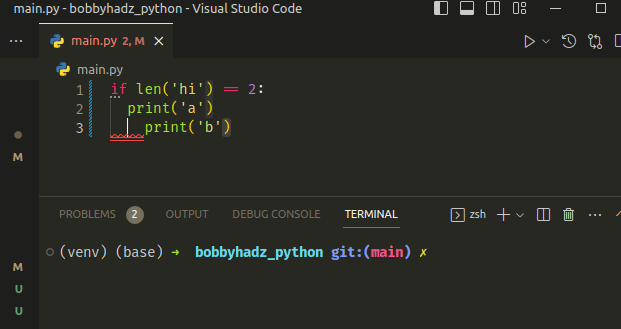















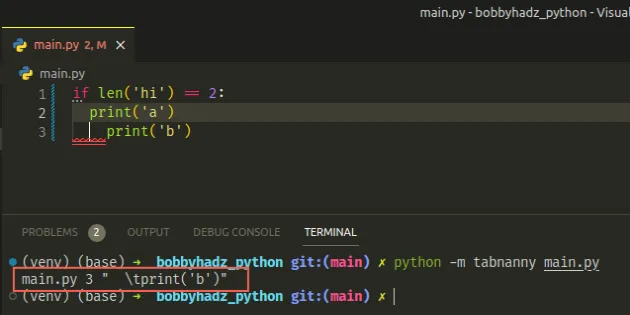


![Python3] TabError: inconsistent use of tabs and spaces in indentation : 네이버 블로그 Python3] Taberror: Inconsistent Use Of Tabs And Spaces In Indentation : 네이버 블로그](https://mblogthumb-phinf.pstatic.net/MjAyMDEwMDlfNDcg/MDAxNjAyMjI1OTYzMjM5.IY8TFTd37VONFCwtZeiE059U0X9-deViX5pt1Cm4Q9sg.HtR4UP5B58lolLmB0gzFfv4Rzjzzui80rasVJNIcdIsg.PNG.je_un/image.png?type=w800)
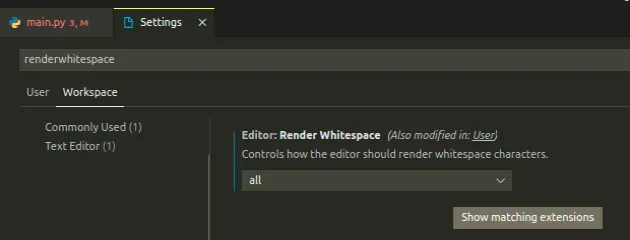

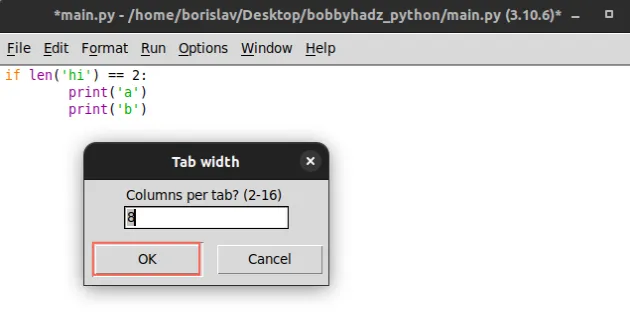








![Python] TabError: inconsistent use of tabs and spaces in indentation : 네이버 블로그 Python] Taberror: Inconsistent Use Of Tabs And Spaces In Indentation : 네이버 블로그](https://mblogthumb-phinf.pstatic.net/MjAxOTA4MTNfOTYg/MDAxNTY1NjYxNzI2NTY0.PeS45sezQg9oKO5irxjT_D3V8dgHXwGjfBpcfbyT0scg.1Tw7vthg1MC65ZQs2wZynAx-Ym0Es2pec2Z8ngbDEowg.PNG.aimldl/notepad_plus_plus_tab_size_replace_by_space.png?type=w800)


![Python] TabError: inconsistent use of tabs and spaces in indentation : 네이버 블로그 Python] Taberror: Inconsistent Use Of Tabs And Spaces In Indentation : 네이버 블로그](https://mblogthumb-phinf.pstatic.net/MjAxOTA4MTNfMTUz/MDAxNTY1NjYyNTE4MjM4._YVBWBQfpgTK6MnJZq7c5prBJsvG0nC0BV_C0-UOWuUg.k8NwzBlmFEd4z3A_TlPMeBDPL63AKMlmauNdB-IwLPIg.PNG.aimldl/Screenshot_from_2019-08-13_11-13-12.png?type=w800)




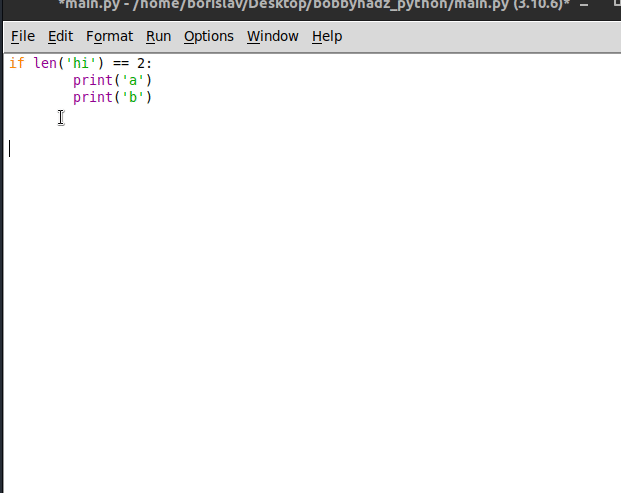


![Solved [python] Not sure why the code is not runningcould | Chegg.com Solved [Python] Not Sure Why The Code Is Not Runningcould | Chegg.Com](https://media.cheggcdn.com/study/745/7453ccd5-160a-4064-9ae1-2992ce6040d4/image)
Article link: taberror inconsistent use of tabs and spaces in indentation.
Learn more about the topic taberror inconsistent use of tabs and spaces in indentation.
- “inconsistent use of tabs and spaces in indentation” [duplicate]
- Python: inconsistent use of tabs and spaces in indentation
- Python: inconsistent use of tabs and spaces in indentation
- TabError inconsistent use of tabs and spaces in indentation
- Python: inconsistent use of tabs and spaces in indentation
- Python: inconsistent use of tabs and spaces in indentation
- inconsistent use of tabs and spaces in indentation notepad++ Python
- TabError inconsistent use of tabs and spaces in indentation
- What ‘inconsistent use of tabs and spaces in indentation …
- Group Lập trình Python | mn cho mình hỏi vì sao dòng 44 bị lỗi …
- inconsistent use of tabs and spaces in indentation, JSON
- Inconsistent use of tabs and spaces in indentation – Javatpoint
- Can someone please tell me what I am getting this error.
- inconsistent use of tabs and spaces in indentation – Edureka
See more: nhanvietluanvan.com/luat-hoc